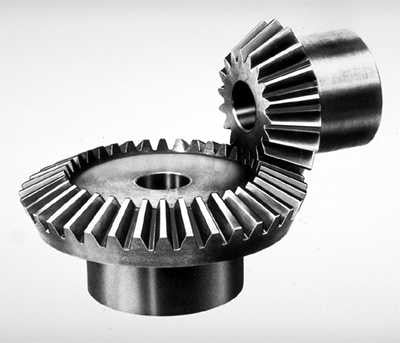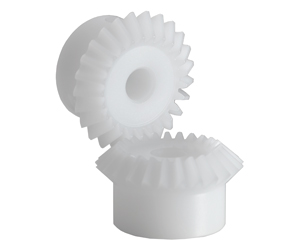Product Description
Product Description
A gear is a rotating circular machine part having cut teeth or, in the case of a cogwheel or gearwheel, inserted teeth (called cogs), which mesh with another (compatible) toothed part to transmit (convert) torque and speed.
Detailed Photos
Packaging & Shipping
Our Advantages
1. We have over 10 years’ experience.
2. OEM or Non-Standard Bearings: Any requirement for Non-standard bearings is easily fulfilled by us due to our vast knowledge and links in the industry.
3. After Sales Service and Technical Assistance: Our company provides after-sales service and technical assistance as per the customer’s requirements and needs.
4. Quick Delivery: Our company provides just-in-time delivery with our streamlined supply chain.
5.We attend promptly to any customer questions. We believe that if our customers are satisfied then it proves our worth. Our customers are always given quick support.
Please contact us immediately if you have any questions.
Related Products
| Application: | Machinery |
|---|---|
| Hardness: | Soft Tooth Surface |
| Gear Position: | External Gear |
| Manufacturing Method: | Cast Gear |
| Toothed Portion Shape: | Spur Gear |
| Material: | Cast Steel |
| Customization: |
Available
| Customized Request |
|---|

What are the limitations of using miter gears in certain applications?
Miter gears, like any other mechanical component, have certain limitations that may restrict their use in certain applications. While miter gears are versatile and widely used, it’s important to consider their limitations to ensure proper selection and application. Here are some limitations of using miter gears:
- Higher Friction: Miter gears typically have higher friction compared to other types of gears, such as spur gears or helical gears. This can result in increased power losses and reduced efficiency, especially in applications where minimizing friction is critical.
- Lower Load Capacity: Miter gears generally have a lower load-carrying capacity compared to gears with parallel or helical tooth arrangements. The nature of their intersecting shafts and smaller tooth engagement area can limit their ability to handle heavy loads or transmit high torque.
- Sensitivity to Misalignment: Miter gears require precise alignment for optimal performance. Even slight misalignment between the shafts can result in increased noise, vibration, and accelerated wear. In applications where maintaining precise alignment is challenging, alternative gear types may be more suitable.
- Limited Speed Range: Miter gears may have limitations in terms of the speed range they can effectively operate at. High speeds can lead to increased noise, heat generation, and potential tooth failure due to centrifugal forces. It’s essential to consider the specific speed requirements of the application and select gears accordingly.
- Complex Manufacturing: Miter gears with specific angles, such as non-90-degree gears, require more complex manufacturing processes compared to standard 90-degree miter gears. This complexity can result in higher costs and longer lead times for custom or non-standard gear configurations.
Despite these limitations, miter gears continue to be widely used in various applications where their unique characteristics and advantages outweigh the drawbacks. It’s important to carefully evaluate the specific requirements of the application and consider alternative gear options if the limitations of miter gears pose significant challenges.

Can miter gears be used to redirect rotational motion in machinery?
Yes, miter gears can be used to redirect rotational motion in machinery. Let’s delve into the details:
1. Change in Direction:
Miter gears are specifically designed to change the direction of rotational motion. By meshing two miter gears together, the input rotational motion can be redirected at a 90-degree angle. This ability to change the direction of rotation makes miter gears ideal for applications where a change in the orientation of the machinery or the direction of movement is required.
2. Perpendicular Shaft Arrangement:
Miter gears achieve rotational redirection by utilizing a perpendicular shaft arrangement. The intersecting shafts of the gears allow for the input and output shafts to be oriented at a right angle. As a result, when one gear rotates, it transfers the rotational motion to the other gear at a 90-degree angle, redirecting the motion along a different axis.
3. Compact Design:
Miter gears have a compact design, which is advantageous when redirecting rotational motion in machinery. Their conical shape and intersecting shaft arrangement allow for efficient use of space. This compactness is particularly beneficial in applications where there are space constraints or a need to optimize the overall size of the machinery.
4. Precise and Reliable Redirection:
Miter gears provide precise and reliable redirection of rotational motion. When designed and manufactured with precision, the straight teeth of miter gears ensure smooth meshing and engagement, resulting in minimal backlash and accurate transmission of rotational motion. This precision allows for consistent and dependable redirection of the rotational motion without loss of power or efficiency.
5. Speed Adjustment:
In addition to changing the direction of rotation, miter gears can also be used to adjust the speed of the output shaft. By varying the number of teeth on the gears or incorporating additional gears, the rotational speed can be increased or reduced as desired. This speed adjustment capability adds flexibility to the machinery, enabling it to adapt to different operational requirements.
6. Common Applications:
Miter gears find wide applications in various machinery where rotational motion redirection is needed. They are commonly used in automotive differentials, robotics, machine tools, printing machinery, camera lenses, and many other mechanical systems. Their ability to redirect rotational motion reliably and efficiently makes them a popular choice in these industries and beyond.
In summary, miter gears are well-suited for redirecting rotational motion in machinery. Their ability to change the direction of rotation, compact design, precise and reliable operation, speed adjustment capability, and widespread use in different industries make them a valuable component for achieving rotational motion redirection in various mechanical systems.

What are the advantages of using miter gears in machinery?
Miter gears offer several advantages when used in machinery. Here’s a detailed explanation of their advantages:
1. Right Angle Power Transmission:
One of the primary advantages of miter gears is their ability to transmit power between intersecting shafts at a right angle. This allows for efficient power transfer in machinery where the input and output shafts need to be oriented perpendicularly. Miter gears eliminate the need for additional components or complex mechanisms to achieve this right angle power transmission.
2. Compact Design:
Miter gears have a compact design due to their conical shape and intersecting shaft arrangement. They occupy less space compared to other types of gears used for parallel or non-intersecting shafts. This compactness is particularly beneficial in machinery where space constraints are a concern, allowing for more efficient utilization of available space.
3. Directional Change of Rotation:
Miter gears enable the change in the direction of rotational motion. By meshing two miter gears, the input rotational motion can be redirected at a 90-degree angle. This flexibility in changing the direction of rotation is advantageous in machinery that requires precise control over the direction of movement or where space limitations restrict the orientation of the equipment.
4. Speed Adjustment:
Miter gears can be used to achieve speed reduction or increase by varying the number of teeth on the gears or combining them with other gears. This allows for adjusting the rotational speed to match the desired output speed. The ability to change the speed with miter gears provides flexibility in adapting the machinery to specific operational requirements.
5. Smooth Operation:
When designed and manufactured with precision, miter gears can provide smooth and efficient operation. Proper tooth profile and tooth contact ensure minimal noise and vibration during gear engagement, resulting in quieter and more reliable machinery performance.
6. Versatility:
Miter gears are versatile and find applications in a wide range of machinery across various industries. They can be employed in different types of equipment, including mechanical clocks, robotics, printing machinery, automotive differentials, camera lenses, and more. The versatility of miter gears makes them a valuable choice for different machinery requirements.
7. High Torque Transmission:
Miter gears are capable of transmitting high torque due to their robust construction and tooth engagement characteristics. This makes them suitable for machinery that requires the transmission of substantial power or torque, ensuring reliable operation even under demanding conditions.
In summary, the advantages of using miter gears in machinery include right angle power transmission, compact design, directional change of rotation, speed adjustment, smooth operation, versatility, and high torque transmission. These advantages make miter gears a preferred choice in various machinery applications, offering efficiency, flexibility, and reliable performance.


editor by CX 2023-10-23